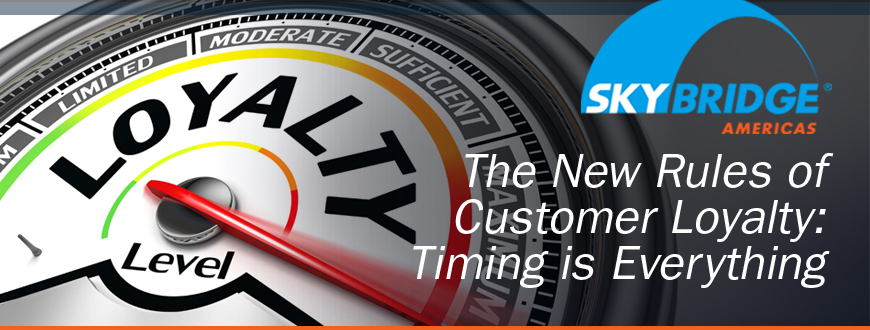
How Emotions, Rational Thought, and Shared Values Each Drive Loyalty at Different Stages in the Customer Lifecycle
In an ambitious new research study, Deloitte took a deep dive into the value of “emotion-driven engagement.” They went super deep, conducting an integrated analysis of 91 million social media posts, data from a meta-analysis of 2090 VOC surveys of two service-focused industries, surveys of 800 consumers, and an online panel of 112 participants.
While the study validates a lot of what most of us already knew or suspected, it also revealed how different messaging and experiences can have radically different effects, based on their timing.
Tech Empowered Decision Making
Without question, technology continues to empower today’s consumers, shaping – and heightening – their expectations of how brands serve them, meet their needs, communicate with them, honor their privacy, listen to them, and respond to their feedback.
In other words, technology has given customers rocket-fast access to information and the ability to process even the most complex product and pricing data with robot-like efficiency. But, somewhat paradoxically, these abilities have not reduced the importance of an emotional connection. If anything, they seem to have exacerbated it.
To borrow a phrase: it’s complicated.
Don’t misunderstand. Today, loyalty decisions are more affected by data and cold, hard facts than ever. Deloitte found that seventy percent of customer loss is prompted by rational factors like price changes or quality issues.
But, according to this study, the influence of such rational considerations only bookends the customer life cycle. They play a dominant role in the initial buying decision and, if negative, can catalyze the decision to leave.
But it’s what happens between those two milestones that really drives the length, stability, and profitability of the relationship.
The Value of Shared Values
In many ways, customers now experience their brand relationships the way they experience their friendships. Before seriously considering a brand, for example, many customers want reassurance that the brand shares their core values and has a stated, demonstrated commitment to a treasured belief or cause. In that way, values matching is a powerful brand awareness-building factor. But values just don’t seem to have much ongoing influence over the life of the relationship. In the Deloitte study, only three percent of customers would recommend a brand based on their shared values.
Feelings, Friendship and Brand Loyalty
After the initial buying decision has been made, it’s the quality of the emotional connection that largely influences the lifecycle of the relationship. In their study, Deloitte included a list of some of the super-charged emotional terms customers use in describing their brand experiences. These range from “gratitude,” “joy” and “belonging” to “anger,” “sadness” and “disillusion.” To further underscore the point, Deloitte also noted that sixty percent of brand-loyal customers use the same emotional terms – like “love,” “happy,” and “adore,” to describe that brand as they use to describe family, friends, and pets. The numbers bear this out. Unlike the handful of customers who make brand referrals based on shared values, forty-four percent of customers would recommend a brand based on their emotional response to it.
Nurturing is Critical
This awareness of how different messaging carries different levels of influence during the buyer journey is critical to successful branding and customer experience strategies. It suggests that factual considerations such as pricing, rewards programs, and ease of use are critical to brand awareness and new customer acquisition marketing. But turning new customers into loyal ones can only happen when they feel good about their connection.
At Skybridge Americas, we are experts at turning customer contacts into emotionally positive, loyal relationships. If you’d like to know more, please reach out. We would love to talk with you about your business goals and how we can help you achieve them.

